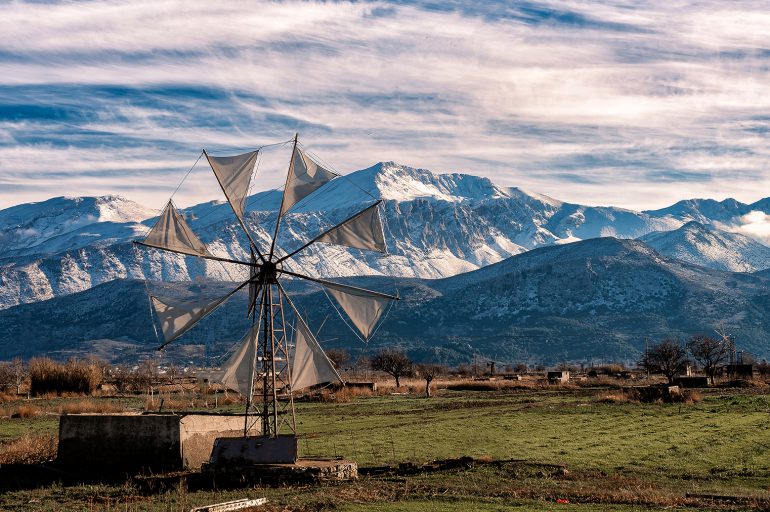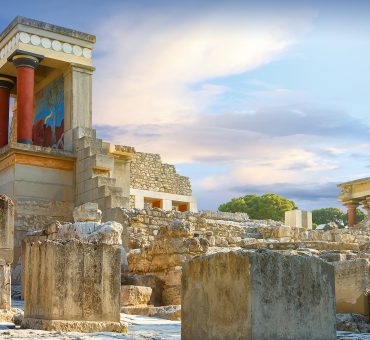Nine hundred metres above sea level, the Lasithi Plateau is one of Crete’s most remarkable natural treasures – a gentle patchwork of fertile green fields dotted with orchards, almond trees and the remains of ancient windmills, cradled by the rugged mountains of the Dikti range. Forty kilometres south east of Creta Maris, exploring this extraordinary region makes a great day out.Sparsely inhabited and with just a few villages, one of the most visited is Psyhro, which is the gateway to the Dikteon Cave, where – so the legend goes – Zeus, the mythical king of the Greek gods – was born. A visit to this sacred cave, one of the most famous in Greece, with its giant stalactites, is a magical experience. Archaeological finds have shown that the cave has been used by Cretan civilisations for at least 6000 years.
Three hundred years ago, the plateau was an even more stunning sight than it is today, when it was dotted with tens of thousands of working windmills with white canvas sails, originally built by the Venetians in the 17th century to irrigate the fields. While many of these iconic monuments remain, most have been replaced with modern pumps. For a glimpse of everyday life on the Plateautoday, head first to the farming town of Tzermiado, or the tiny hamlet of Agios Giorgos with its folklore museum. A handful of restaurants at Tzermiado and Agios Giorgos are good value, with the tavernas Kourites and Rea recommended. Psyhro is also a good spot for lunch at the Stavros and Petros tavernas. The even smaller villages of Marmaketo (famous for its wild orchids), Agios Konstatínos, and Avrakodes are all worth passing through, each giving an insight into the plateau’s unique communities.
A visit to the ruins of Karfi, high in the mountains behind Tzermiado takes you to the site of an ancient Minoan settlement., while the gorge of Havgas, near Agios Konstantínos, is lovely for a walk in pristine nature (though difficult higher up). A tranquil spot is the monastery of Vidiani at the foot of Vouno Louloudaki (Mountain of Little Flowers), near Kato Metochi, with its small natural history museum.The plateau is well-suited for hiking and cycling enthusiasts, and the E4 walking trail passes through Vidiani Monastery, Agios Haralambos, Plati and Psyro. Surrounded by the mountains and the smaller plateaus of Limnakaro , Katharo, and Nissimou, a journey to this very special part of Crete introduces you to a rich and historic part of the island. This is rural Crete at its most authentic – fresh mountain air, colourful folklore, and a simply delicious natural environment.



